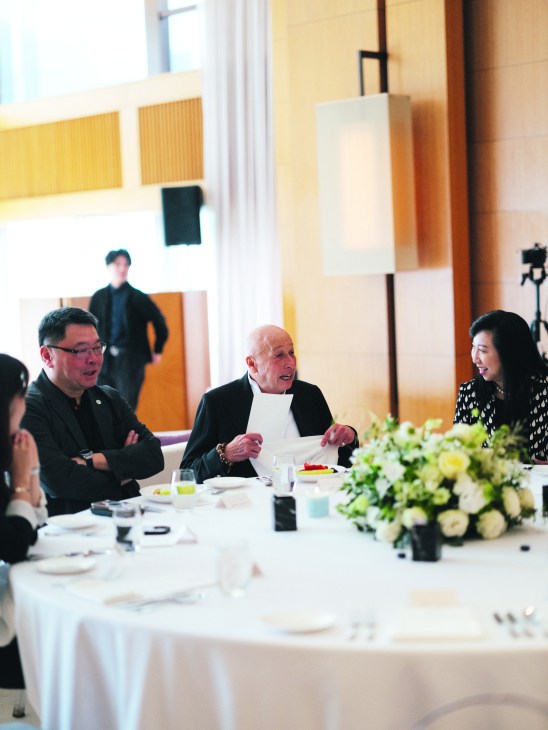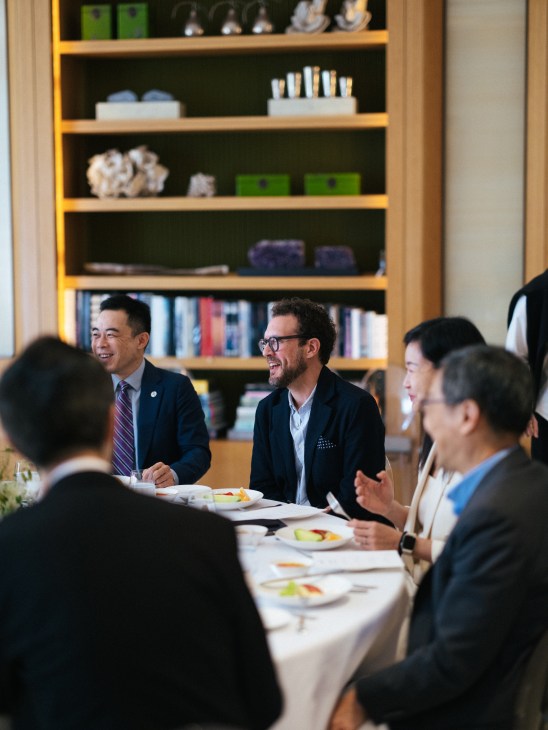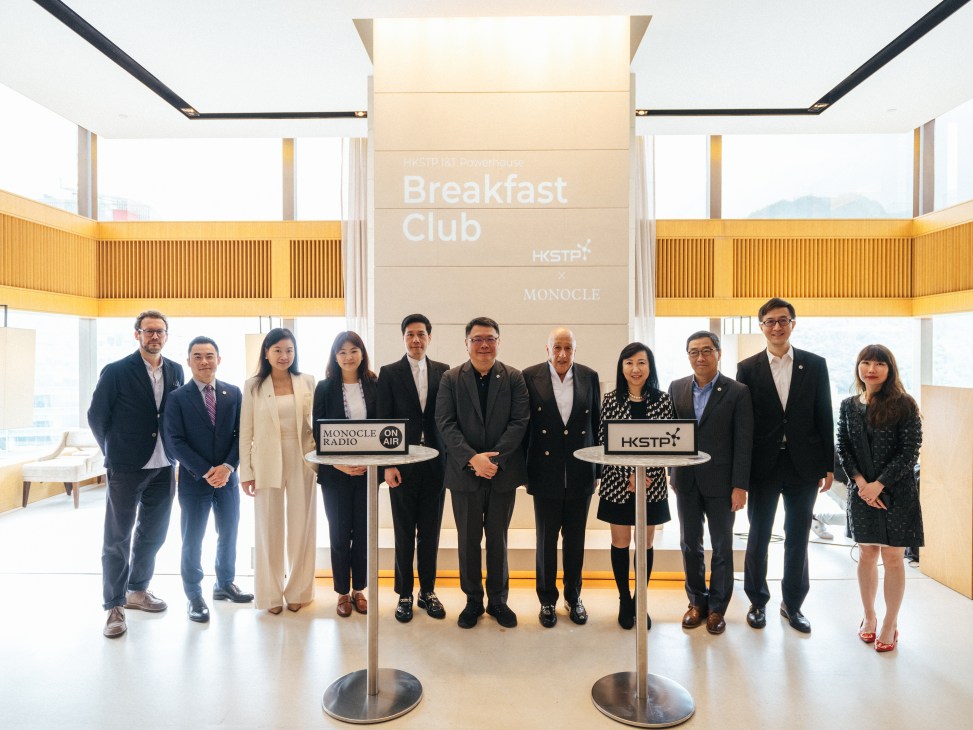Hong Kong’s innovation era
In a city known for its vibrancy, Hong Kong Science and Technology Parks Corporation (HKSTP) is turning that energy into innovation. This spirit was on display at the inaugural I&T Powerhouse Breakfast Club, a lively event co-hosted by HKSTP and Monocle.

As the organisation steering Hong Kong’s innovation and technology (I&T) ambitions, HKSTP has cultivated a dynamic community of more than 2,300 ventures, 13 unicorns and a vibrant ecosystem supporting at least 24,000 innovators – helping position the city as a global innovation powerhouse. “At Science Park, we provide all the infrastructure and training – and then let them fly,” says HKSTP chairman Dr Sunny Chai. To build on this momentum, HKSTP launched its I&T Powerhouse initiative to showcase Hong Kong’s soft power and foster thought leadership. As part of the initiative, the Breakfast Club event saw Monocle’s Tom Edwards joined by top industry leaders for an intimate discussion on the city’s progress – and a lively exchange about the path ahead.


Listen to a special episode of ‘The Entrepreneurs’ with HKSTP below:
Building progress
Infrastructure and access are key to Hong Kong’s success
Albert Wong, CEO of HKSTP, highlighted a bold vision for expanding the city’s I&T sector. “We’re going to build another science park in the Northern Territory in the next five to 10 years,” he says.
This rapid growth reflects a broader plan to cement Hong Kong with established tech players looking for a springboard internationally. “We are the gateway to the West,” says HKSTP advisor Dr Allan Zeman, chairman of Lan Kwai Fong Group. “We can be the superconnector between a lot of Chinese companies that want to go to the world.”


“Our mission is building a world-class I&T ecosystem,” says Conrad Chan, corporate partner at Kwok Yih & Chan. “Including attracting talents and nurturing innovation.”
Fuelling the future
Hong Kong’s innovation agenda requires a strong focus on talent.
Wong sees talent as the city’s true edge. “Big companies are moving to Hong Kong because of talent,” he says. “There’s a lot of young people that are very good in STEM subjects. We need to provide them with training and development.”
Gavin Kwok, HKSTP director of philanthropy and foundation, agrees. “We can give opportunities to young people to work with park companies,” he says. “They can see what is happening and find what they can do in the future.”
The University of Hong Kong’s professor Stephanie Ma described how it’s creating pathways with a new innovation school. “It’s a cross between engineering, science and even arts, because we want to nurture the next generation of problem solvers and innovators,” she says.


Backing bold ideas
A thriving start-up scene needs more than ideas – it needs vision.
As Hong Kong’s I&T sector evolved, so did HKSTP’s role. “From facility management to an incubator, an accelerator, a talent hub and now a $300m (€265m) investment fund,” says Wong of its evolution.
However, to truly scale, a shared vision is key. Hilda Chan, CMO of HKSTP, highlighted other countries’ success in working towards a shared vision. “Look at Saudi Arabia, it has its funded strategy Vision 2030,” she says. “Everyone works towards that.”
Cecilia Ho, president of Lee Hysan Foundation, echoed the need for coordinated action. “Work must be done on the private-sector side,” she says. “We need HKSTP’s expertise to help us understand the needs and which action is fastest and most cost effective.”
South China Morning Post CEO Catherine So pointed to a mindset shift. “Saying ‘yes’ to transformation and embracing technology are crucial to progress,” she says. She emphasised the need for “an ecosystem where talents and innovations can thrive” just like HKSTP has created.
Whatever the future holds, Hong Kong is poised to reap lasting benefits. “I cannot predict what is going to happen,” says Wong. “The only thing I can say is that it will be very exciting.”

Explore HKSTP’s soft power and thought leadership –– visit the I&T Powerhouse website today.


